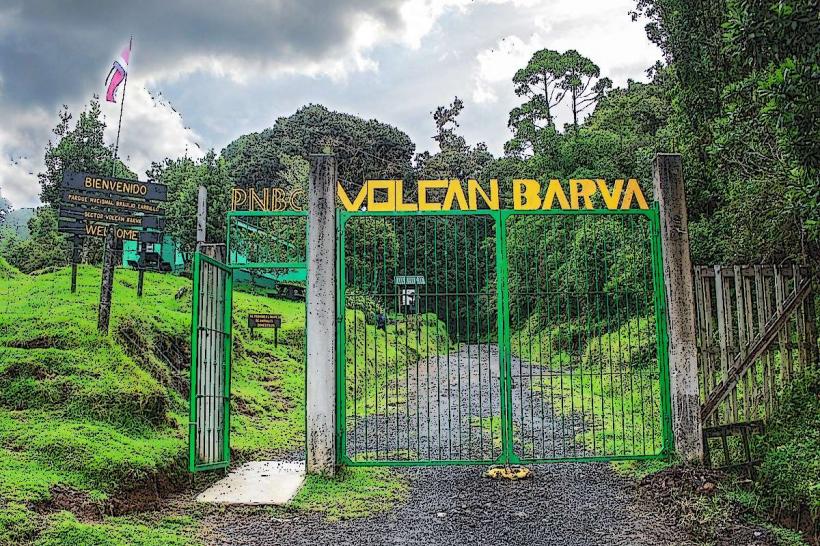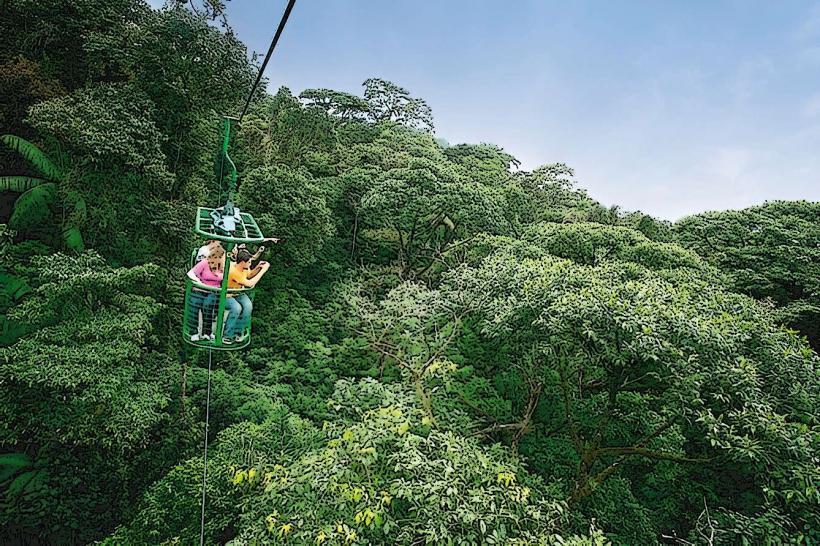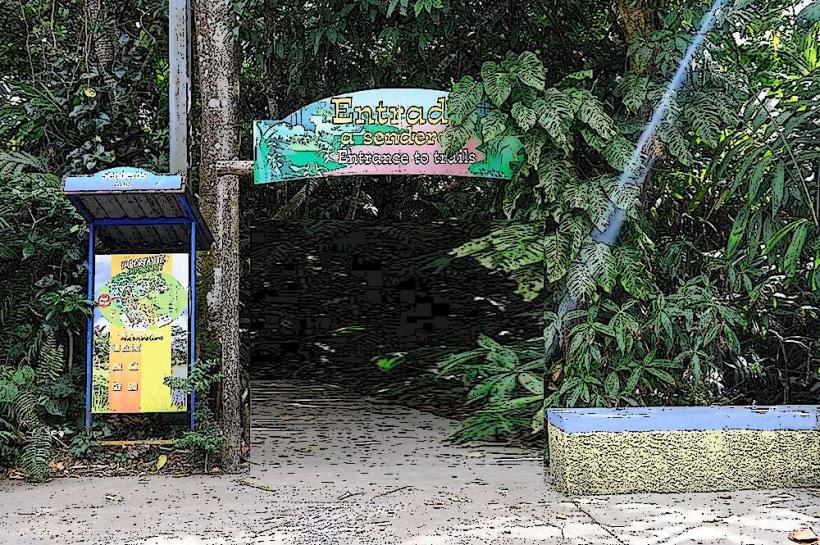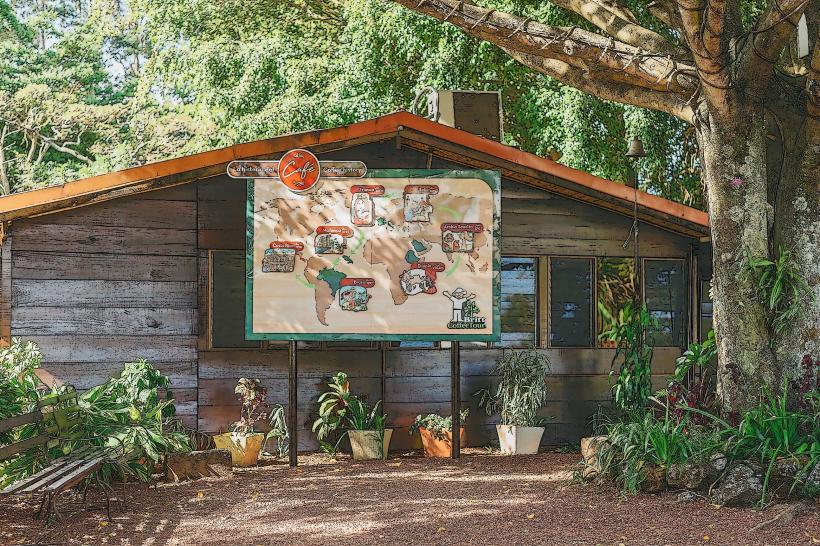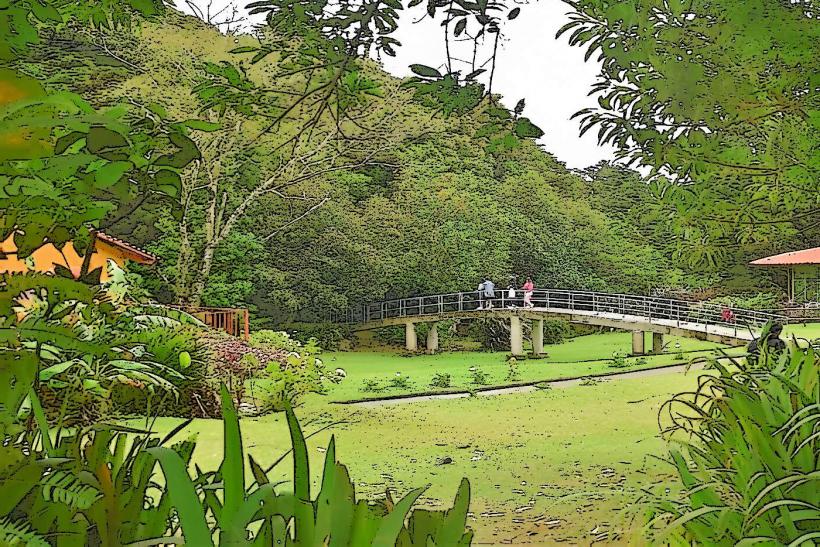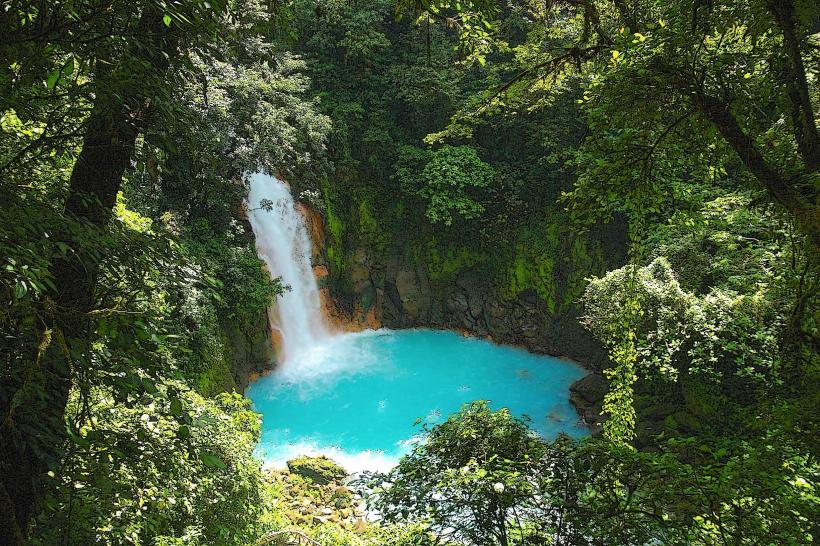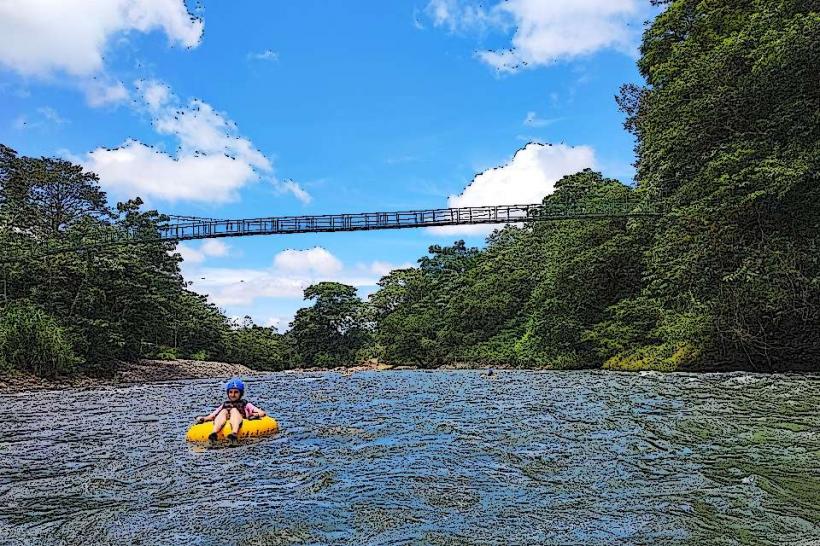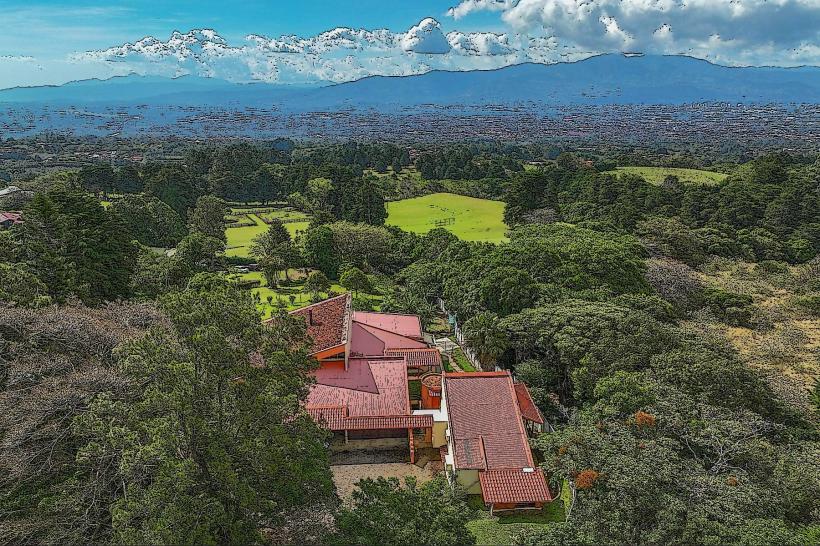Information
Landmark: Tirimbina Biological ReserveCity: Heredia
Country: Costa Rica
Continent: North America
The Tirimbina Biological Reserve is a private ecological reserve located in the Sarapiquí region of Costa Rica, known for its rich biodiversity and commitment to environmental conservation and research. The reserve is an excellent destination for nature lovers, birdwatchers, and eco-tourists seeking to explore the tropical rainforest and wildlife of the Caribbean lowlands.
Overview:
- Name: Tirimbina Biological Reserve (Reserva Biológica Tirimbina)
- Location: Situated in the northern part of Costa Rica, in Sarapiquí, within the Heredia Province. The reserve is near the Sarapiquí River and is approximately 2 to 2.5 hours from San José by car.
- Size: The reserve spans over 350 hectares (865 acres) of primary and secondary rainforest.
- Established: The reserve was founded in the early 1990s with the aim of conserving the region's unique ecosystems and providing a sanctuary for endangered species and local wildlife.
Key Features of the Tirimbina Biological Reserve:
1. Biodiversity and Ecosystems:
Tirimbina Biological Reserve is home to a wide range of plant and animal species, making it a prime destination for nature enthusiasts, scientists, and photographers. The reserve is located in one of the most biodiverse regions in Costa Rica, with a variety of ecosystems, including tropical rainforests, rivers, and wetlands.
- Flora: The reserve boasts a diverse collection of plants, including towering trees, orchids, palms, and bromeliads. Many of these plants are endemic to the region.
- Fauna: The reserve is home to a rich array of wildlife, including monkeys, sloths, frogs, and various species of birds. It is particularly known for being an excellent spot for birdwatching, with species such as toucans, parrots, and hummingbirds frequently spotted.
- Insects and Amphibians: The reserve is also a haven for diverse insects and amphibians, including poison dart frogs and butterflies.
2. Birdwatching:
Birdwatching is one of the most popular activities at the Tirimbina Biological Reserve. The region's tropical rainforest environment provides the perfect habitat for an impressive variety of bird species.
- Some of the notable birds found in the reserve include Keel-billed Toucans, Great Green Macaws, Blue-crowned Motmots, and numerous hummingbird species.
- The reserve’s proximity to the Sarapiquí River and its surrounding rainforests makes it an ideal location for observing both resident and migratory birds.
3. Tirimbina Suspension Bridge:
One of the main attractions of the reserve is the Tirimbina Suspension Bridge, a long bridge that stretches over the Sarapiquí River. The bridge provides a unique perspective of the surrounding rainforest and river, and is an excellent spot for wildlife viewing.
- The bridge offers stunning views of the rainforest canopy, and visitors may see wildlife such as monkeys, birds, and insects from above.
- The bridge is a popular photo opportunity for visitors, offering incredible views of the surrounding landscape.
4. Educational and Guided Tours:
The reserve offers a variety of guided tours that allow visitors to learn about the local ecology, flora, and fauna. The guides are highly knowledgeable and can provide valuable insights into the reserve’s unique ecosystems and conservation efforts.
- Day Tours: Visitors can take guided hikes along well-maintained trails through the rainforest to explore the biodiversity and wildlife. The tours often include stops at the suspension bridge, riverbanks, and various points of interest in the reserve.
- Night Tours: A night tour of the reserve is another popular option, as many of the rainforest animals are most active at night. These tours provide an opportunity to see nocturnal species such as bats, frogs, and owls.
- Birdwatching Tours: Specialized birdwatching tours are available for those interested in observing the numerous species of birds in the area.
5. Research and Conservation:
Tirimbina Biological Reserve plays a crucial role in scientific research and conservation efforts. The reserve collaborates with several local and international organizations to study the biodiversity of the region and promote sustainable environmental practices.
- Research Projects: Scientists conduct ongoing studies on topics such as tropical ecology, wildlife behavior, and conservation. The reserve’s efforts help protect local habitats and species, and it serves as a living laboratory for students and researchers.
- Environmental Education: The reserve also hosts educational programs for local communities and visitors, raising awareness about sustainability and the importance of conservation in the tropical rainforests.
6. Tirimbina Chocolate Tour:
The reserve also offers a unique and educational experience through its chocolate tour, where visitors can learn about the process of making Costa Rican chocolate from cacao beans. This tour offers a hands-on experience in traditional chocolate-making, and guests can sample fresh, organic chocolate produced on-site.
- The chocolate tour highlights the cultural significance of cacao in Costa Rica and provides insights into the region’s agricultural practices, specifically regarding the sustainable cultivation of cacao.
7. Hiking Trails:
The reserve has a network of well-maintained hiking trails that offer visitors a chance to explore its various ecosystems. The trails are suitable for visitors of all ages and fitness levels.
- Forest Trails: The trails wind through the rainforest and provide opportunities to observe a variety of plant and animal species. The guides typically highlight the importance of the reserve’s flora and fauna.
- River Trail: The river trail runs alongside the Sarapiquí River, where visitors can spot wildlife along the riverbanks and enjoy the peaceful sound of the flowing water.
Access and Transportation:
Location:
Tirimbina Biological Reserve is located in the Sarapiquí region of Costa Rica, about 2 hours from San José, the capital city. It is near the town of La Virgen, close to the Sarapiquí River.
How to Get There:
- By Car: From San José, take Route 32 north toward Limón. The reserve is about 2 hours from the capital, and the drive will take you through scenic forests and rural towns.
- Public Transportation: Buses run from San José to the town of La Virgen, and from there, taxis or other forms of local transportation can take you to the reserve.
- Guided Tours: Many tour operators offer day trips from San José to Tirimbina, including transportation and guided tours through the reserve.
Entrance Fees:
The reserve typically charges an entrance fee to visitors, which helps maintain the trails, infrastructure, and conservation programs. There may be additional charges for specialized tours, such as chocolate tours or night hikes.
Why Visit Tirimbina Biological Reserve?
Tirimbina Biological Reserve offers an immersive experience in one of Costa Rica’s most biodiverse regions. Visitors can enjoy a range of activities, from hiking and birdwatching to learning about the reserve’s research and conservation efforts. The reserve's unique combination of wildlife, rainforest exploration, and eco-tourism make it an ideal destination for nature lovers and those interested in sustainable travel.
- Biodiversity: The reserve is home to an impressive range of species, making it a must-visit for those interested in wildlife and ecology.
- Unique Experiences: The suspension bridge, chocolate tour, and night hikes offer memorable and educational experiences that showcase the region’s natural beauty and cultural heritage.
- Conservation Efforts: By visiting the reserve, guests contribute to important conservation efforts aimed at preserving Costa Rica’s tropical rainforests and their inhabitants.
Tirimbina Biological Reserve is a fantastic destination for those seeking an in-depth, eco-friendly adventure into one of the world’s most biodiverse regions.

